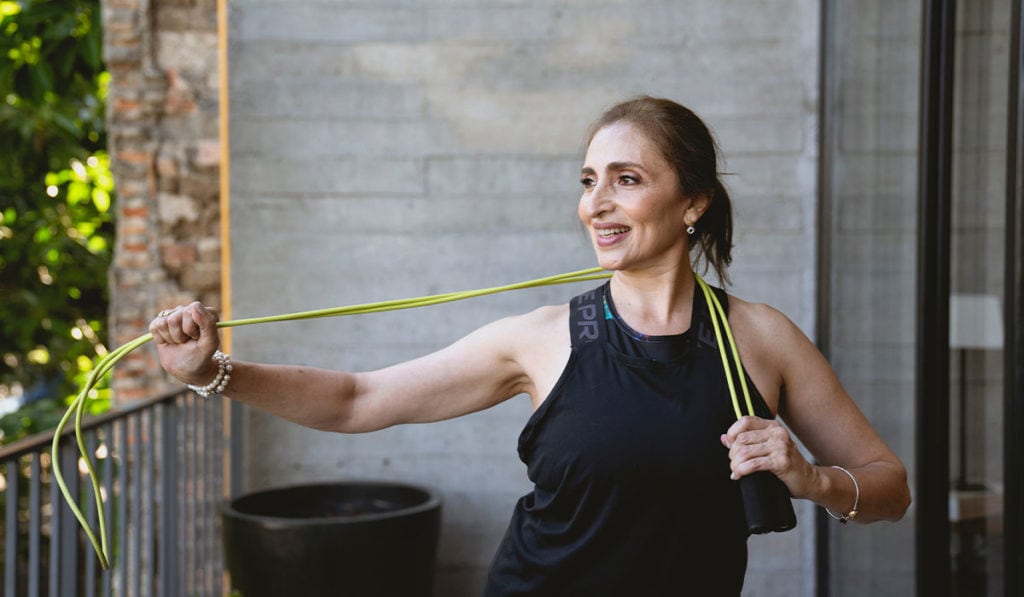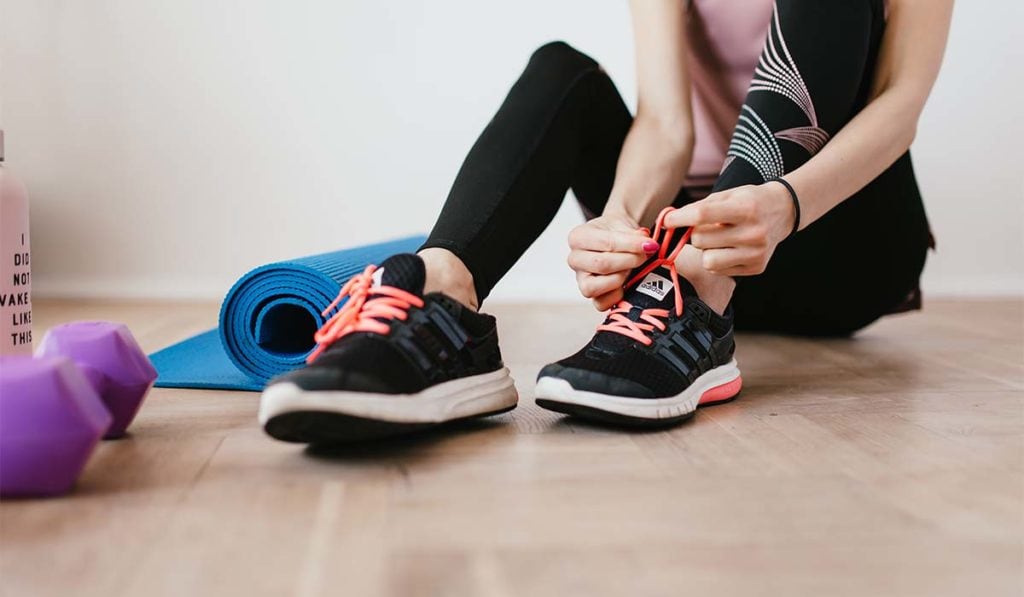
Build Habits With Habit Stacking
Committing to new healthy habits, like exercising regularly, can be tough! Whether you’re struggling with motivation, time, or the unpredictability of your daily routine, it is still possible to stick to it.
The easiest way to make new habits stick is with a tool called habit stacking. Let’s look at how it works and some easy ways to get started.
What is habit stacking?

Habit stacking is a simple and effective technique that helps you create and stick to new habits. It involves stacking a new behavior onto something you already do, making it easier to remember.1
This strategy often feels less overwhelming because it capitalizes on your brain’s existing neural networks and builds off something you already do.
For example, if you want to drink more water, you might drink a glass of water every morning after you brush your teeth. Or, if you want to walk every day for 30 minutes, you might set your tennis shoes by the front door and walk first thing each morning after breakfast.
By lumping new habits into your routine alongside something else you regularly do, it’s a lot easier to remember and maintain the new behavior.
Habit stacking methods

There are three different habit stacking methods you can use to create new habits for yourself:
- The chain method involves linking a new habit to an old one. By making the chained habit as convenient as possible, you’re much more likely to remember to do it and do it regularly. For instance, you might take a multivitamin every morning while waiting for your coffee to brew. Placing your bottle of vitamins next to your coffee maker makes it easier to remember the new habit.
- The sequence method is helpful if you want to add a new behavior to a sequence of related habits. For instance, if you want to start working out every morning, add the new behavior into a specific order of actions. First, you might wake up, drink a glass of water, work out, shower, and then eat breakfast.
- The pairing method allows you to pair two habits together and do them simultaneously. It’s most effective when you pair the new habit with something you really enjoy. For example, if you already love to run, and your new goal is to read one book a month, you might be more successful if you listen to audiobooks while you run. (If you prefer podcasts, we have a full list of great podcasts to listen to while running!)
What are the benefits of habit stacking?
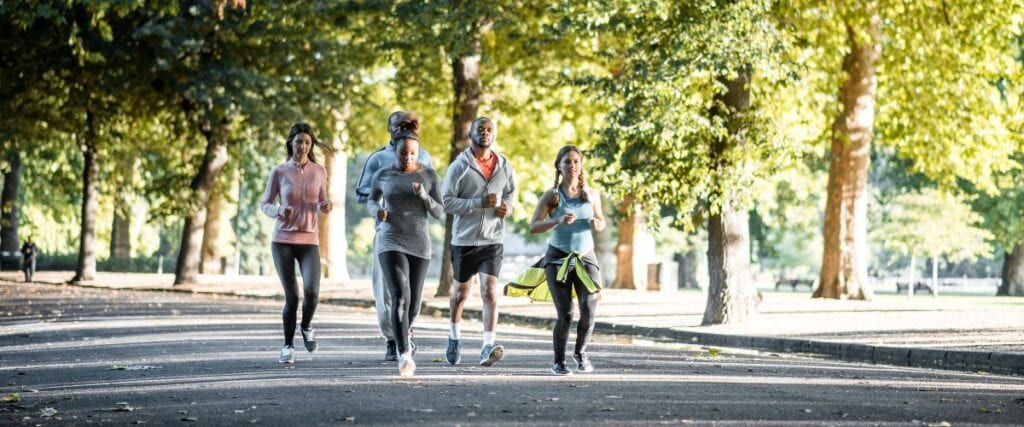
Habit stacking is an effective way to establish and stick to new healthy behaviors. Here’s why:
- It builds off the existing habits you already have in place. Remembering to complete a new behavior consistently is difficult, especially if you have a full and busy schedule. Using your existing behaviors to propel you into a new habit takes less mental energy.
- It helps you stay consistent. Habit stacking automatically makes time for new habits by easily fitting them into your day. This removes the obstacle of figuring out when you’ll do something and makes it easier to complete each day.
- It feels less overwhelming. When you add habits to pre-existing behaviors, trying to remember it all feels less daunting, and you can automatically integrate it into your routine.
How to start using habit stacking to exercise regularly
We designed Vingo to be a fun and exciting way to move your body! But being intentional about exercising regularly can still be challenging. Here’s how you can use habit stacking to make it stick.
Start small.

Committing to a new behavior with habit stacking doesn’t have to require a ton of time. Plus, research indicates starting small is actually more effective, especially if it allows you to be more consistent.2 Failure can be very discouraging, so small, gradual changes are best. As you can, gradually add new habits to your routine for more significant changes.
Choose your trigger or anchor behavior.

Use an anchor or a trigger (something you already do daily) as a building block for your new desired behavior. Your trigger should be something that happens every day, without fail. For instance, if you want to run with Vingo daily for 30 minutes, your trigger could be ending your work day. When you get home from work, immediately put your workout clothes on and head to your treadmill for your 30-minute workout.
Use this simple formula.

The easiest way to start habit stacking is to use this formula: “Before/After I [old habit], I will [new habit].” With that in mind, pick a new, desired behavior and integrate it into your routine by pairing it with a current behavior. For example, you might say, “Before I make my morning coffee, I will stretch and run.” or “After I shower at night, I will read one chapter from a book.”
Be realistic.
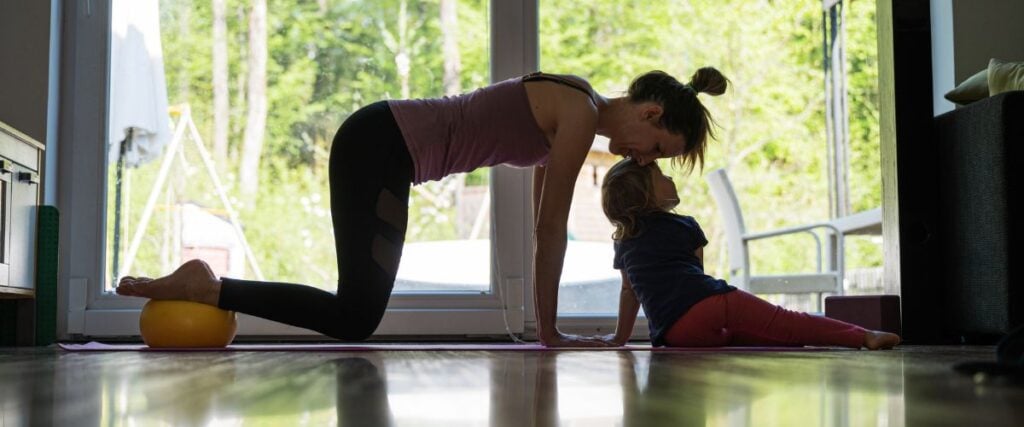
Make sure your anchor behavior aligns with the realities of your everyday life. For instance, if you have young children who wake frequently in the early morning hours, perhaps finding an afternoon or evening anchor for your new workout routine would be better, like ending the work day or taking a lunch break while at work. That way, you’re less likely to be interrupted or miss it entirely if you need to tend to your children instead.
Set a deadline.
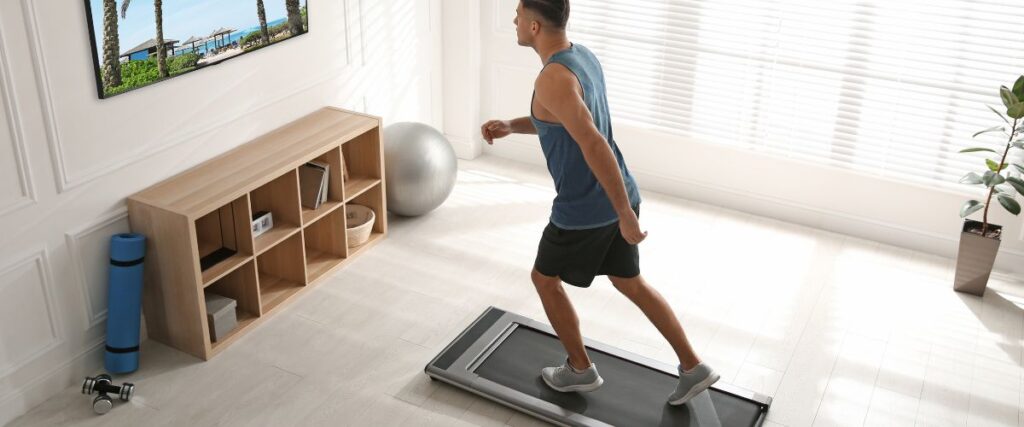
Giving yourself a time limit to achieve your goal is helpful because it feels less open-ended, increasing your motivation. It also feels less challenging because you know you won’t be chasing your goal for months; there’s an end in sight! Setting a deadline for each new goal also gives you a chance to stop, evaluate your progress, and modify or develop a new goal if necessary.
Like any other goal-setting method, habit stacking requires flexibility, determination, and hard work. Still, it’s an effective and easy way to change your lifestyle and habits to create a healthier version of yourself.
Key Takeaways:
Habit stacking is using existing behaviors as a building block for new habits. It’s a highly effective way to stick to healthy habits like working out daily, and three different methods allow you to customize it to your needs and preferences. To start habit stacking, choose a small goal, find an anchor behavior, be realistic about your schedule and limitations, and set a reasonable deadline.Sources:
- Walsh, K. (2023, February 13). What Is Habit Stacking — and Why It Helps With Behavior Change. EverydayHealth.com. https://www.everydayhealth.com/emotional-health/habit-stacking-and-why-it-might-help-your-behavior-changes-stick/
- Gardner, B., Lally, P., & Wardle, J. (2012). Making health habitual: the psychology of ‘habit-formation’ and general practice. British Journal of General Practice, 62(605), 664–666. https://doi.org/10.3399/bjgp12x659466




